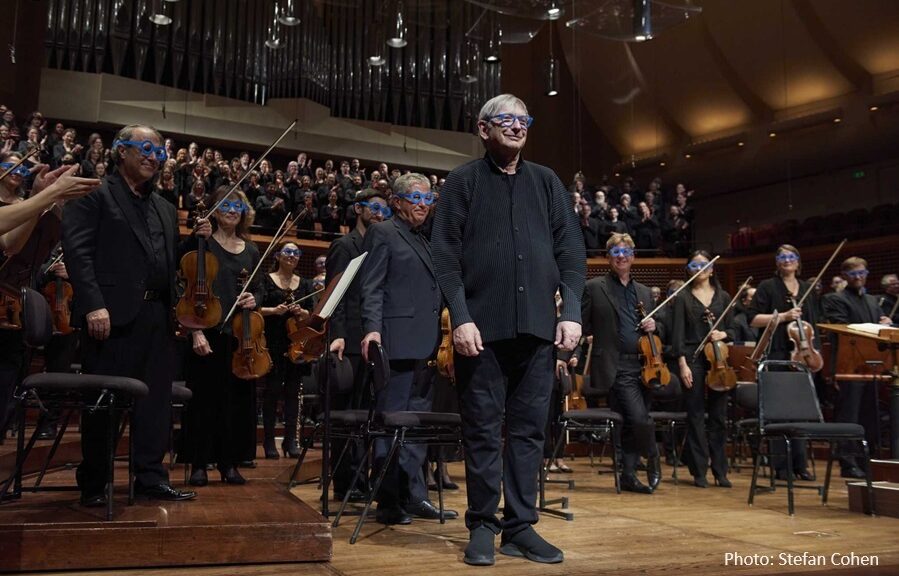
MTT/GUSTAV: AN ENDEARING LOVE FEST
The end of an era, it was, but a very sweet one, with well-wishing from countless admirers and nosegays you could almost smell in an inordinately long round of plaudits.
This was a sendoff (at least from subscription concerts) for beloved maestro Michael Tilson Thomas, conductor laureate, leading the San Francisco Symphony in a signature work, Gustav Mahler’s epic Symphony No. 5.
By the end, with the 6-minute standing ovation, there were not many dry eyes left in the long-sold-out Davies Hall. Patrons were willing to sell their souls to the devil, or perhaps even trade in football playoff tickets, to enter MTT’s grand finale concerts.
The love-in permeated the performance of the epic, hyper-dramatic work, with his veteran players pouring out their souls in the farewell. He conducted the whole 87-minute opus by memory, never once turning a page on the score before him.
It was high drama throughout, with Mahler in his grand foray into yet-more passionate music at the start of the 20th century. The dominant minor keys and stentorian trumpets at the start, with the ominous funeral march, set the stage for a turbulent, multi-dimensional foray into modernism. His torrential storm of sound, suggesting violence and instability, featured segments with the French horns in a “Bells raised” instruction, producing a deliberately coarser sound, as anticipating some unseen adversary coming over the horizon.
At the other extreme, coming at the end of the intense hour number one, was the “Adagietto,” the most beautiful, sublime music Mahler ever produced, with just harp and strings carrying us into a unique sonic wonderland. The piece is believed to be an expression of ardor and love for Alma, who became his wife.
The lyrical lines were manna from heaven for MTT, who veers away from the most jagged, spark-fed interpretations to produce his total sound space. To bring about his effect, the orchestra placement was reshuffled, with second violins on the conductor’s right side downstage, and the low strings directly behind the first violins, allowing the sound of the basses to glow into our direction.
Already, the old order was giving way to new. Three chairs of principals were reoriented, now featuring Yobeen Kim at flute, and the exquisite harpist Katherine Siochi. Notably still missing was the longtime horn principal Robert Ward, who retired last month, with no replacement yet in sight. Sitting in for the current concerts was guest Michael Stevens from the Rochester (NY) Philharmonic.
….The massive symphonies of Mahler took an eternity to win acceptance in the US, where outside of the NY Philharmonic, the Mahler boom did not begin at all till the late 1950s—-nearly five decades after the composer’s death. At the S.F. Symphony, presenting one a year in numerical order got rolling a decade later, under Josef Krips, who reached No. 5 in 1970 before his health-related retirement.
MTT, now 79, is completing 50 years on the SFS podium, starting off with Mahler’s Ninth. He had become the orchestra’s music director in 1995, earning plaudits comparable to his mentor, Leonard Bernstein.
MAHLER’S FIFTH SYMPHONY, Jan. 25-27 (heard Jan. 26, without intermission), the San Francisco Symphony under Music Director Laureate Michael Tilson Thomas, at Davies Hall, S.F. For SFS info: 415-864-6000 or go online, www.sfsymphony.org